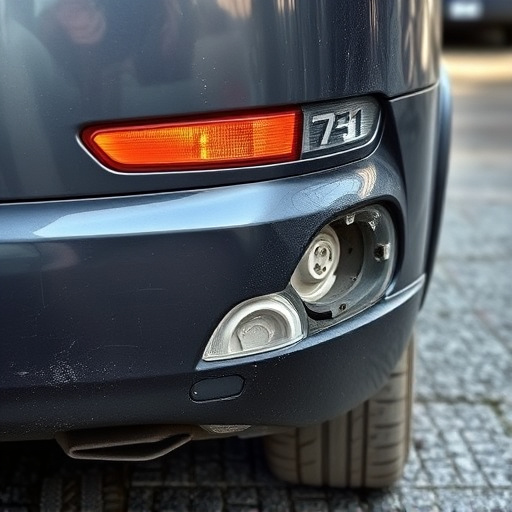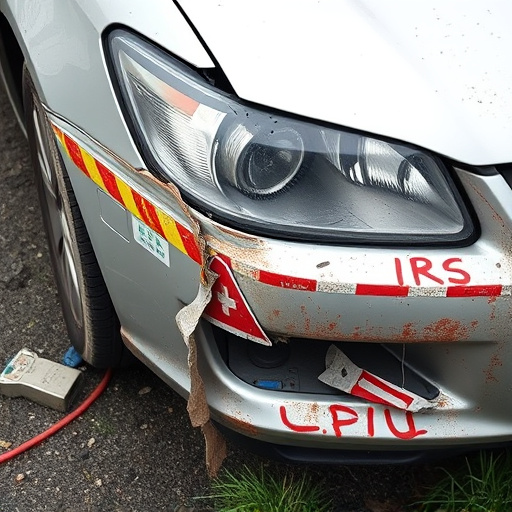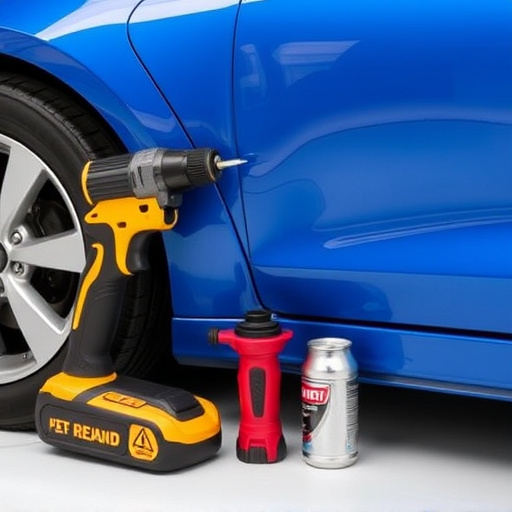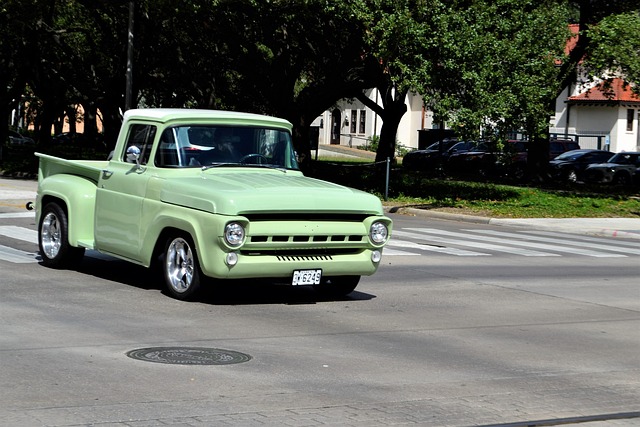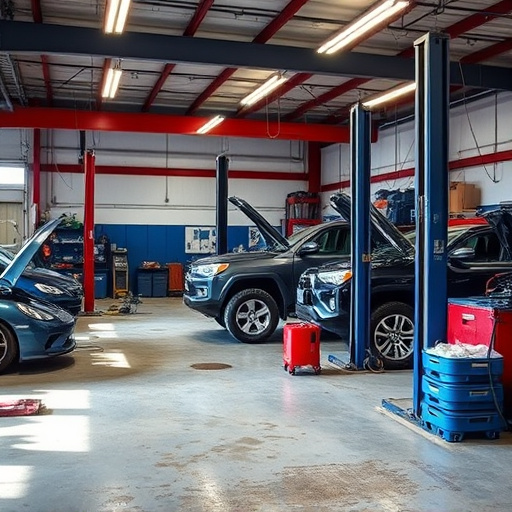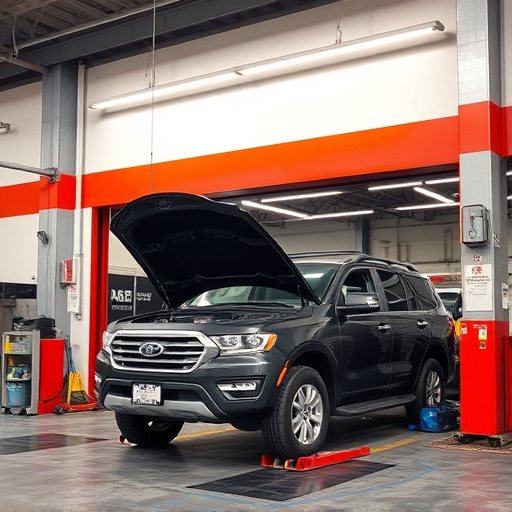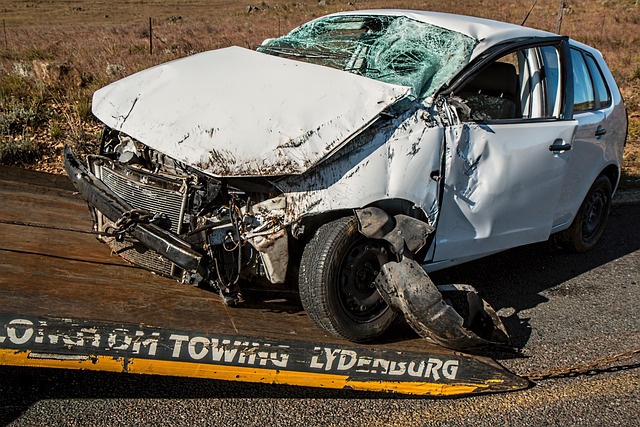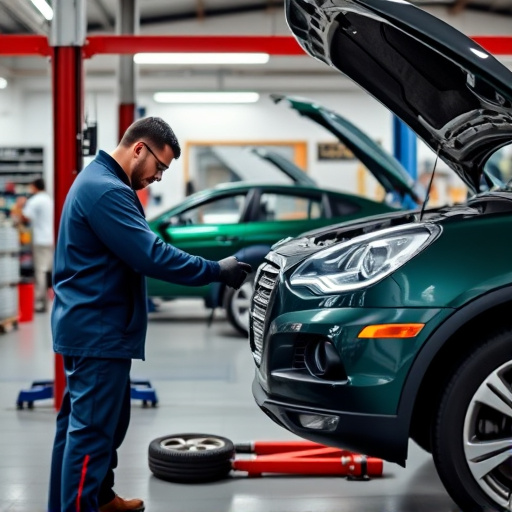Squeeze-type resistance spot welding is a precise technique for creating strong bonds between thin metal sheets, widely used in car collision repair to ensure structural integrity. While manual systems offer control and consistency, they are slow and variable. Robotic Resistance Spot Welding Systems provide unparalleled precision and speed, automating the process, improving efficiency, boosting productivity, and ensuring consistent high-quality welds crucial for passenger safety in complex automotive manufacturing.
When it comes to joining metal components, squeeze-type resistance spot welding (STRSW) offers a precise and efficient method. This article explores two primary systems for STRSW: manual and robotic. Understanding the unique advantages and drawbacks of each is key to making an informed decision. Manual systems offer dexterity and cost-effectiveness, while robotic solutions provide increased speed, consistency, and productivity, making them ideal for high-volume production.
- Understanding Squeeze-Type Resistance Spot Welding
- Advantages and Disadvantages of Manual Systems
- Benefits and Considerations of Robotic Systems
Understanding Squeeze-Type Resistance Spot Welding
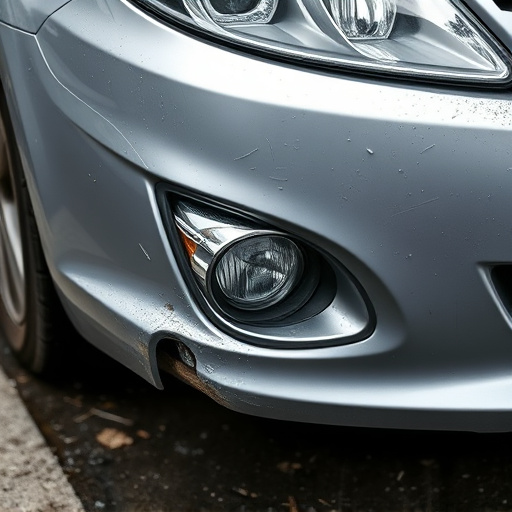
Squeeze-type resistance spot welding is a specialized technique used in automotive repair and manufacturing. Unlike traditional welding methods, it focuses on creating a strong bond by applying pressure and heat to a specific point between two metal surfaces. This process involves using a small, precise tool that generates a concentrated force, allowing for accurate and controlled welds. The tool’s ability to exert a significant amount of pressure in a short time makes it particularly effective for joining thin metal sheets commonly found in modern vehicle structures.
This method is especially valuable in car collision repair, where precision and efficiency are paramount. During a fender bender or more severe accidents, the integrity of the vehicle’s body panels must be restored without compromising structural strength. Squeeze-type spot welding ensures robust bonds that match the original manufacturing standards, contributing to the overall safety and reliability of the vehicle. Its versatility makes it a preferred choice in various industries, including automotive repair and manufacturing, where speed, quality, and consistency are essential.
Advantages and Disadvantages of Manual Systems
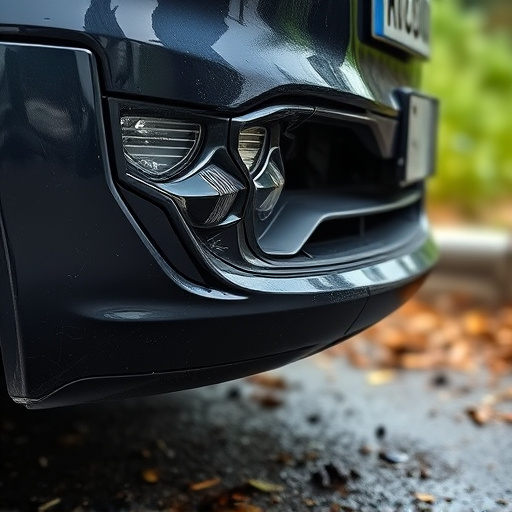
Manual resistance spot welding systems, often employing squeeze-type techniques, have been a cornerstone in automotive manufacturing and repairs, like those seen in Mercedes Benz collision centers. These systems offer several advantages. They provide a high degree of control and precision, allowing skilled technicians to achieve consistent welds with minimal training. This makes them versatile for various applications, including complex bumper repairs. Moreover, manual systems are generally more affordable to purchase and maintain compared to their robotic counterparts.
However, relying on manual labor also presents several drawbacks. The process is inherently slower than automated alternatives due to the operator’s need for frequent adjustments and setup changes between welds. This can lead to increased production times and higher costs in high-volume workshops. Additionally, consistency among different operators can vary, potentially impacting the overall quality of welds, especially in collision centers where quick turnaround times are crucial.
Benefits and Considerations of Robotic Systems
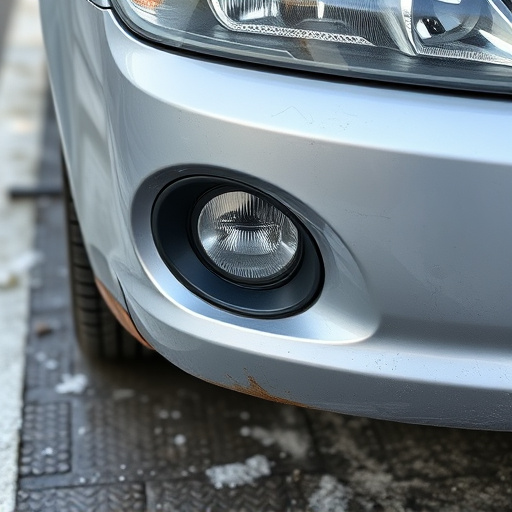
Robotic Resistance Spot Welding Systems offer a multitude of benefits for modern automotive manufacturing and collision repair shops, particularly in the context of vehicle collision repair and fender repair processes. These systems are designed to perform squeeze-type resistance spot welding with unparalleled precision and speed. By automating the welding process, robotic arms can consistently deliver high-quality welds, ensuring structural integrity and enhancing safety in automotive assembly lines. This is especially crucial in complex vehicle manufacturing, where precise alignment and consistent weld quality are vital for overall vehicle performance and passenger safety.
When considering robotic systems, workshops should weigh factors such as initial investment costs, operational efficiency gains, and long-term maintenance requirements. While the upfront cost of robotics might be higher than manual methods, their capability to handle intricate welding tasks in vehicle collision repair can lead to reduced production times and lower labor costs over time. Furthermore, robots can operate continuously without fatigue, allowing for 24/7 productivity boosts and contributing to a more efficient automotive manufacturing ecosystem.
When deciding between manual and robotic resistance spot welding systems, understanding the nuances of squeeze-type resistance spot welding is key. While manual systems offer versatility and cost-effectiveness, they rely on human skill and consistency. Conversely, robotic systems streamline the process, enhancing precision and productivity but come with higher upfront costs. Ultimately, the choice depends on your shop’s specific needs, budget, and desired weld quality, with squeeze-type resistance spot welding techniques playing a pivotal role in both approaches.



